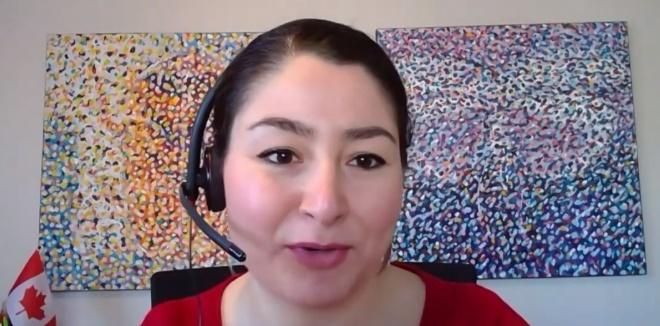Sudden disconnection or poor reception during a cellular phone call could soon be a thing of the past in rural parts of Eastern Ontario.
On Friday, March 19, the Eastern Ontario Regional Network (EORN) announced that it is partnering with Rogers Communications to improve cellular service across Eastern Ontario. EORN is a not-for-profit organization of the Warden’s Caucus (EOWC), which is an association of county government wardens and single-tier municipal mayors across Eastern Ontario. The United Counties of Prescott and Russell are members of both EORN and the EOWC.
The announcement was made by EORN Chair and Peterborough County Warden J. Murray Jones, EOWC Chair and Renfrew County Warden Debbie Robinson, federal Minister of Rural Economic Development Maryam Monsef, Ontario Minister of Infrastructure Laurie Scott, and Peterborough Mayor Diane Therrien, who is Chair of the Eastern Ontario Mayor’s Caucus (EOMC).
“Connectivity has been one of our priorities for a long time,” said Robinson.
EORN’s Cell Gap Project is intended to improve both the reach and quality of cellular services throughout the region. Rogers Communications’ investment brings the total value of the public-private partnership to more than $300 million. This includes investments from the federal and provincial governments who each contributed $71 million and an additional $10 million from the EOWC and most municipalities within the Eastern Ontario Mayors’ Caucus.
Monsef said that the pandemic has made digital connections more essential.
Rogers Communications was selected through a competitive bidding process to identify a telecommunication partner who offered both the expertise and best value for expanded cell coverage.
The Canadian Radio-television and Telecommunications Commission (CRTC) has designated both mobile and fixed broadband as basic services for all Canadians. The Cell Gap Project aims to provide:
- 99 per cent of the area with voice calling services.
- At least 95 per cent of the area with standard-definition (SD) level services, such as video-app calls, basic app usage and streaming of SD video.
- At least 85 per cent of the area with service levels that can support streaming high-definition video and more data-intensive apps.
To better serve rural Eastern Ontario, an area of some 50,000 square kilometres, the project will involve construction of more than 300 new telecommunication towers and will upgrade more than 300 existing towers over the next four to five years. Upgrades and construction will begin as early as this spring.
Powered by Ericsson, Rogers brings the latest generation in 5G wireless network technology, which over time will deliver unprecedented speed, instant response times, and fast, reliable connections that transform how people live and work. New services will be activated as groups of towers are built or upgraded. The project is to be completed in 2025.
Rogers is anticipating that the existing towers will be upgraded by 2022. The location and construction of new towers will depend on site acquisition, municipal approvals, construction times, and testing.
“It’s no longer a nice to have, it’s a need to have,” said Dean Prevost, Rogers President of Connected Home and Rogers for Business.
5G wireless technology has faced criticism from some people over alleged effects on human health and has even been falsely blamed for causing COVID-19.
“The skepticism and concern are very ill-placed,” said Prevost.
He noted that cellular communications are heavily regulated, and people have been using the signals in various forms for 35 years.
“The facts and science are quite clear, this is safe,” Prevost emphasized.


